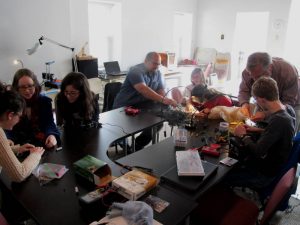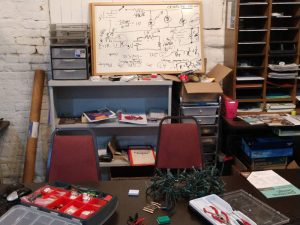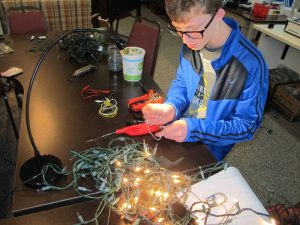
Raising questions and seeking answers can be great learning. When given a trash bag full incandescent holiday mini-lights last year, it raised the question “when one bulb burns out the string stays lit, but why do they all go out when you remove it?” That led to a lot of learning about holiday light strings and the bulbs they use, more than can be covered in this blog post!

And resulted in the topics for the last 2 months at the Castlemakers Kids meetings. We started with simple electrical circuit diagrams, schematic components, and voltage/resistance in November. With a volt-ohm meter we were troubleshooting incandescent light strings pretty quickly. By December’s meeting we got into diodes and LED’s, along with Ohm’s law, to make our own LED lights for packages. And learned why lithium batteries can power an LED, but alkaline batteries can burn them out!

It’s safe to say everyone there learned something, including the adults. Few of the adults for example had heard of anti-fuse’s, one of the features of those small incandescent bulbs that let them burn out yet still keep the rest of the string lit. Who would have guessed that the piezo sparker from a butane candle lighter or gas grill could restore a burned out light string to identify the bad bulb? Too much to cover here, will try to write a longer blog post later detailing some of the experiments and what we found. In January’s meeting we’ll be continuing experimenting with LED’s and components – join us!